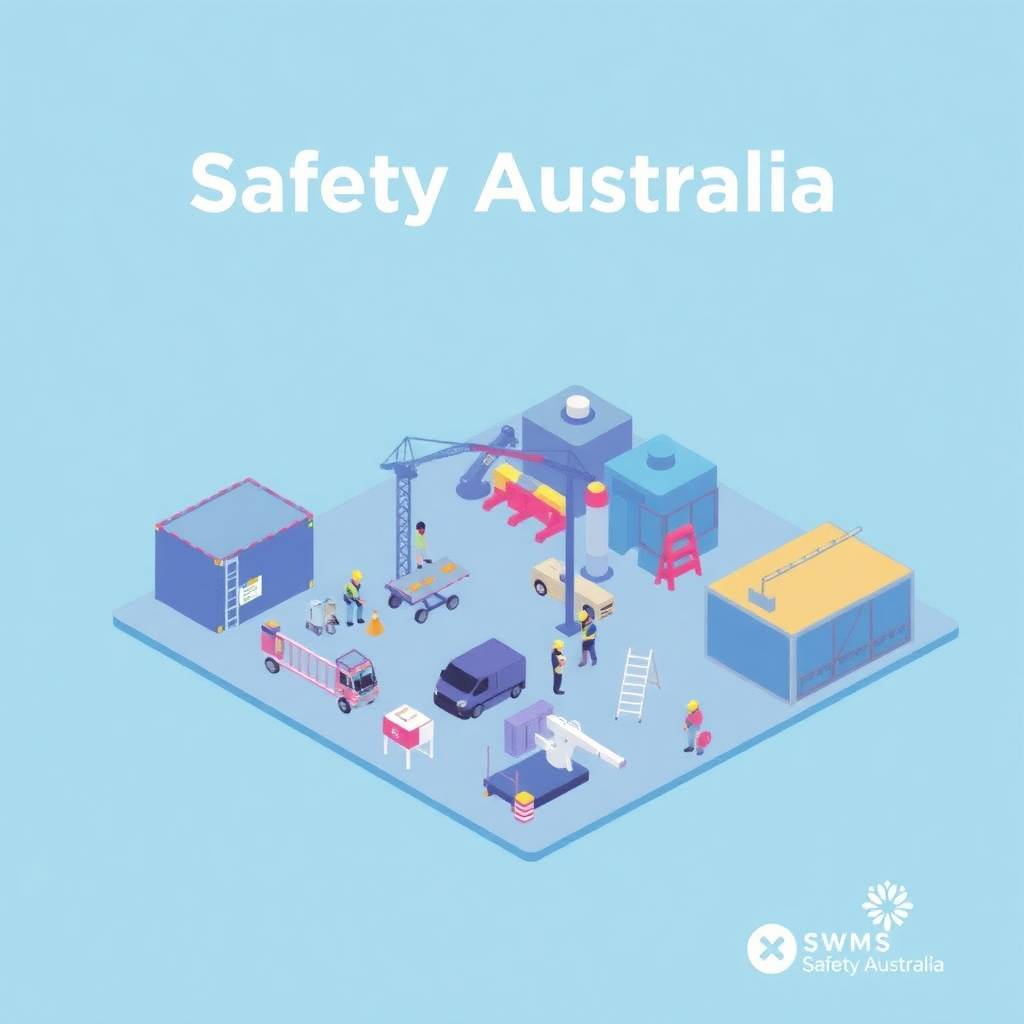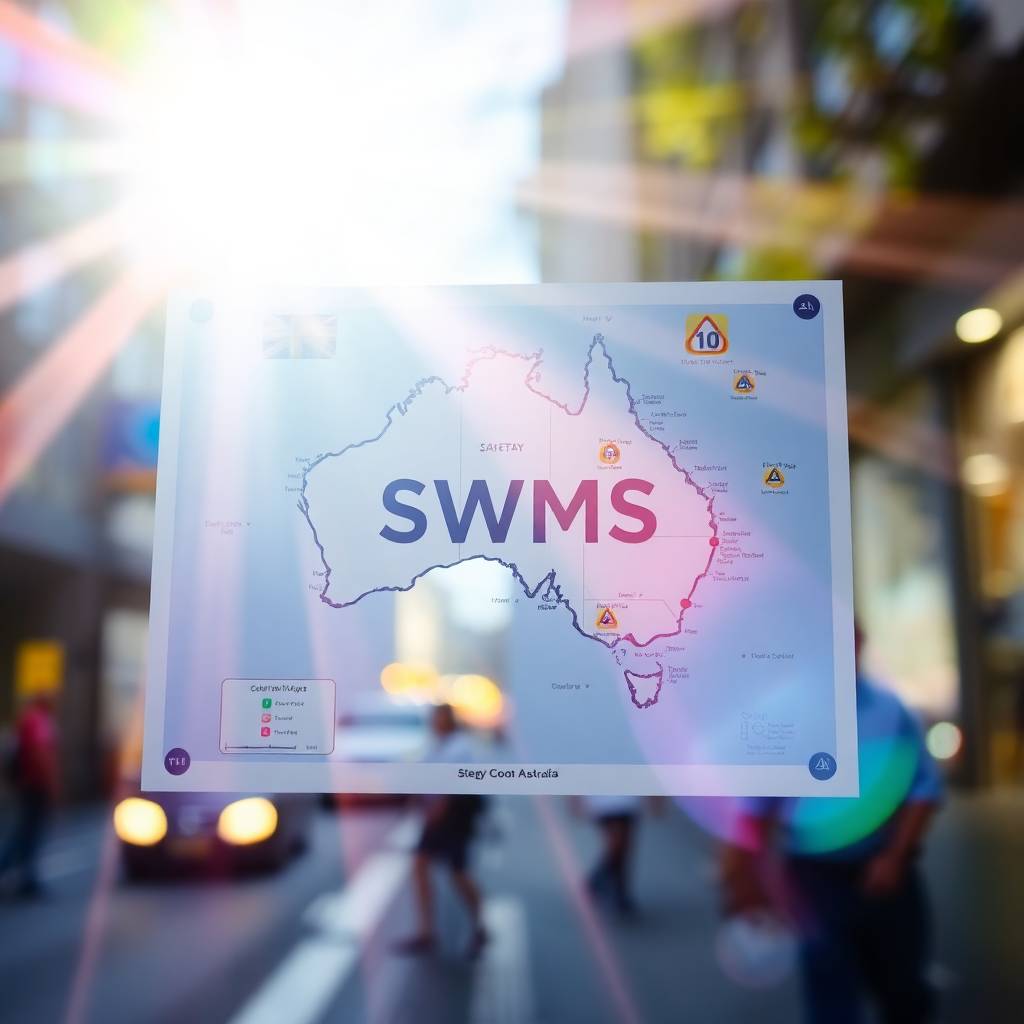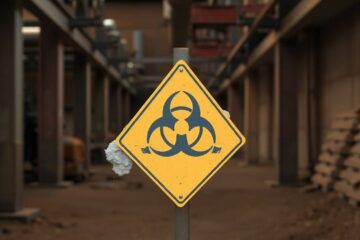Understanding how to use a Safe Work Method Statement (SWMS) in Australia is critical for staying compliant with workplace safety laws, and for protecting your workers.
This guide will explain:
- What a SWMS is
- When it’s legally required in Australia
- How to create an effective one
- Free examples and industry-specific guidance
Whether you’re in construction, logistics, or facilities management, this page is for you.

What Is a SWMS in Australia?
A SWMS in Australia is a document required for high-risk construction work (HRCW). It outlines the specific tasks, associated hazards, and safety controls needed to perform the work safely.
It must also:
- Detail how risks will be eliminated or minimised
- Be site-specific
- Be readily available to workers and supervisors
- Be regularly reviewed and updated
Employers, contractors, and PCBU (Persons Conducting a Business or Undertaking) have a legal duty to ensure a SWMS is in place for high-risk tasks.
When Is a SWMS Legally Required in Australia?
A SWMS is mandatory under Australian WHS law when undertaking any of the following high-risk construction work:
- Working at heights (above 2 metres)
- Working in or near traffic or moving plant
- Working with asbestos or hazardous chemicals
- Electrical work or demolition
- Excavation deeper than 1.5 metres
- Work in confined spaces
If you’re managing any of these risks, you must have a SWMS in Australia that clearly identifies hazards and controls.
Industries That Commonly Use SWMS in Australia
While construction is the main focus, many other industries now use SWMS in Australia for both compliance and good practice, including:
- Mining and resources
- Civil infrastructure
- Facility maintenance
- Logistics and warehousing
- Energy and utilities
- Remote and FIFO operations
Some even use SWMS-style documents for managing psychosocial hazards like stress and fatigue.
What Should a SWMS Include?
A compliant SWMS in Australia should cover:
A compliant and effective SWMS in Australia must contain detailed, task-specific information. Below are the key elements every Safe Work Method Statement should cover:
Description of the High-Risk Task
Start your SWMS by clearly outlining the specific high-risk work activity. This should include the name of the task, where it will occur, and why it qualifies as high-risk under Australian WHS legislation. For example, “installation of roof sheeting at a height exceeding 2 metres.”
Being precise here sets the context for identifying hazards and selecting the right controls.
Step-by-Step Procedure
Break down the task into logical, sequential steps that workers will follow. This helps identify points where hazards might occur and control measures need to be applied. Each step should be clear enough that any competent worker could understand and follow it without ambiguity.
For example:
- Deliver roofing materials to site
- Set up fall arrest system
- Begin roof sheeting installation
This section forms the foundation of your risk management.
Hazards and Potential Consequences
For each step of the task, list out the foreseeable hazards. This might include risks such as falls, manual handling injuries, electric shock, or exposure to harmful substances.
Also include the potential consequences (e.g. “serious injury or fatality”), which help communicate the level of risk and justify the control measures chosen.
Risk Control Measures
Document the specific risk control measures you’ll implement to reduce or eliminate each hazard. These should align with the hierarchy of control, prioritising elimination, substitution, engineering, administration, and finally, PPE.
Examples include:
- Use of edge protection and harnesses for fall prevention
- Isolation of electrical sources before work
- Mandatory permits for confined space entry
- Toolbox talks and safety inductions for awareness
This is the most important section of your SWMS in Australia it shows exactly how risks will be managed.
Roles and Responsibilities
Define who is responsible for each aspect of the work and safety controls. This includes site supervisors, workers, subcontractors, and any safety officers.
For example:
- Site Supervisor: Ensure fall protection is installed
- Workers: Follow lockout/tagout procedures
- Safety Rep: Conduct daily inspections and sign-offs
Accountability is essential for safety, and for demonstrating compliance.
Monitoring and Review Methods
Outline how the SWMS will be monitored during the work and reviewed if conditions change. This includes:
- Regular site inspections
- Sign-off sheets or digital tracking
- Procedures for stopping work if risks escalate
- Review triggers (e.g. new staff, changes in method, weather)
This ensures your SWMS remains a living document, not just a tick-box exercise.
Date and Signatures
Finally, your SWMS must be signed and dated by the responsible parties before work begins. Each worker involved in the high-risk task should also review, understand, and sign the SWMS to confirm they’re aware of the hazards and required controls.
Digital signatures are acceptable, provided they’re accessible on-site and can be audited if needed.
It should be clear, practical, and tailored to the specific job and site.

SWMS Example (Free Preview)
Here’s a basic example of a SWMS in Australia:
| Task | Hazard | Control Measures |
|---|---|---|
| Working at Height | Falls >2m | Harness, scaffold, fall protection |
| Hot Work | Burns, Fire Risk | Permit, fire extinguisher, PPE |
| Excavation | Collapse | Shoring, engineer sign-off |
You can customise these templates or build your own using our downloadable packs.
How to Create a SWMS in Australia (Step-by-Step)
- Identify the high-risk task
- List associated hazards (use your risk register)
- Describe control measures using the hierarchy of control
- Document the work method in steps
- Assign responsibilities
- Sign and communicate it to your workers
- Store and review regularly
💡 Tip: If you’re short on time or unsure where to start, using a pre-written SWMS template that’s customisable can save hours.
Where to Get SWMS Templates in Australia
At SaferOutcomes, we provide downloadable, editable SWMS templates built for compliance with WHS laws in Australia. Our templates include:
- Working at Heights SWMS
- Electrical Work SWMS
- Mental Health & Fatigue SWMS
- Custom-written SWMS on request
FAQ: SWMS in Australia
What does SWMS stand for in Australia?
Safe Work Method Statement, a document required for high-risk work under WHS laws.
When is a SWMS required?
Any time high-risk construction work is performed (see full list above).
Can I use a SWMS template?
Yes, as long as it’s site-specific and tailored to the actual task and hazards involved.
Do non-construction industries need SWMS?
Not always legally, but it’s strongly recommended for managing serious risks in logistics, maintenance, and remote work environments.
Make SWMS in Australia Work for You
Whether you’re legally required to or just want to create a safer, more accountable site, a properly completed SWMS in Australia helps you:
- Stay compliant
- Avoid legal issues
- Reduce incidents
- Build a culture of safety
And with ready-made templates available, there’s no excuse to fall behind on compliance.


